There are surfaces that are a walker's dream. Britain is a land of sheep, and many surfaces are close cropped turf that is springy underfoot. In the North Carneddau I have seen wild horses cropping near a 2900 foot summit, and their grazing adds to the quality of the lovely, springy turf.
Yet there are more difficult surfaces. One time I was in County Leitrim, North West Ireland, trudging over the lower slopes of the Glenfarne Plateau, trying to find a route to the top. I struggled across the bog, my human body lumbering heavily as I tried to keep my balance. Then a mountain hare shot past me, shaming my human clumsiness as it sped lightly over the bog and disappeared into the distance. This showed me that I was in terrain that was not the natural home to humans. I belong further downhill, and the bog is unfriendly land into which I must venture as a visitor. Boggy land can sap your energy quicker than terra firma can.
I was in a land where the bog is merely difficult, but at times bogs can be dangerous. There are some areas where it is deep enough to sink into. One place that has some lethal bogs is Dartmoor in South West England. It also in has hidden mine shafts into which the unsuspecting can stumble. Whatever you do in places like this, stick to the paths.
In fact it is safer to stick to paths in all circumstances, as the paths have evolved through time to take the safest and easiest routes. An example is the tourist path up Ben Nevis, which is perfectly safe as long as you stick to it, but there are terrifying cliffs that threaten those who stray off route, and one dangerous place in them is Five Fingered Gulley, which has taken many lives. Do not stray along this path in the dark, and do not stray off it in daylight
Some mountains have stony sections that make for heavy walking. The Glydrs of North Wales have a name that means clutter; and below you see a section of Croagh Patrick, Ireland's holy mountain. It is not only steep and prone to mists, but has paths that are often rocky. There is no wrong in walking rocky paths, but realize that an ankle can be turned and that they can sap the energy if you walk on them.
Similarly, there are area covered with thick heather, which can look beautiful but can drain your energy if you try to walk for long distances across it. The thick heather of the Brecon Beacons is used for training by the SAS, the elite special forces unit. They have to run across it to build fitness. But these are ultimate fighting men. They have to handle terrain like this, you and I don't. Stick to the paths.





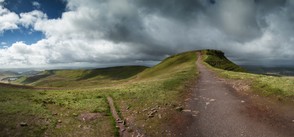
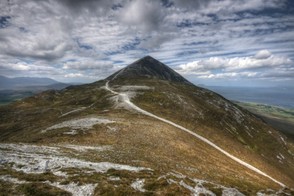


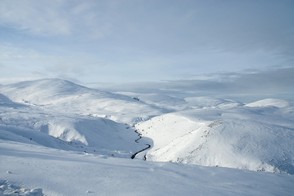
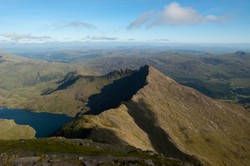

 The North Wales Pilgrim Path20 days ago
The North Wales Pilgrim Path20 days ago
 Rewilding the Isle of the Thundergodon 02/17/2024
Rewilding the Isle of the Thundergodon 02/17/2024
 Adrienne von Speyr a life on the edge of heavenon 01/24/2024
Adrienne von Speyr a life on the edge of heavenon 01/24/2024
 The Granite Kingdom: a Cornish Journeyon 12/29/2023
The Granite Kingdom: a Cornish Journeyon 12/29/2023


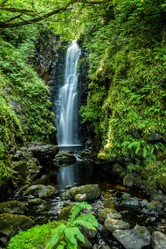
Comments
I have not seen the film.
Thank you for your comment below in answer to my previous, same-day question.
Fire is the means that elementary-school and Sunday-school teachers invoked for divine-impelled worldwide destruction.
Might you have seen the film The coming convergence? The latter movie might have suggested that all the wrong human choices, such as peacetime violence and wartime massacres, muster up an end after we all perish and therefore which we will not know.
We were taught in primary school that he would destroy it by fire, but that is a mere theological opinion. There are no other traditions that I know about. My stance is made clear in my response to Jehovah's witnesses. When they ask me whether I believe in the end of the world I say yes, but when they ask me if it is coming soon I reply that I don't know, but as I am seventy three and suffering from an incurable disease unless the end happens in the next twenty years I am unconcerned.
Thank you!
This is somewhat -- inspired by pre- and post-Flood thoughts -- related, because my question about possible extant, and your answer about non-existent, Biblical traditions of the Ice Age.
Is there any tradition about how God might destroy a wicked world a second time?
No. There is no biblical tradition of the Ice Age.
Your last comment intrigues me about "how humans survived the Ice Age."
It made me think of the pre-Flood peoples and the post-Flood survivors.
Some online sources seem to suggest the Ice Age as a second divine worldwide cleansing. Would there be any tradition behind such an interpretation?
Thanks Derdriu. I think that age matters in making decisions as to when to go and when to abandon. A year or two back I stumbled climbing Snowdon, and a gentleman helped me up. I did not need help, though I thanked him. But then I realized that he had seen an elderly man fall over and so had a natural urge to assist. I had noticed some time before that the bodily flexibility which I used to have when scrambling over jumbled rock was not there any longer. I have to accept that in my sixties I am more limited than I once was.
Frank, This is sound advice, especially emphasizing the importance of knowing when to abandon a climb or hike and of staying on paths. As part of their training, special forces such as Navy Seals in US chalk up skill-refining experiences by surviving expected and unexpected challenges which would be daunting, to the say the least, to those with lesser fitness levels. Aficionados and amateurs, in addition to extensive experience as climbers and hikers, tend to emphasize the value of preparedness through tips such as you've provided.
Yes, October is a deceptive month here as well.
Thank you so much for writing this. It's more than with my blessing, it's with my extremely active encouragement. I didn't know that the SAS trained on that heather. I can certainly see why.
New England got its name from its similarity to the colonists' homeland, so it is inevitable that your conditions, Nelda, will be like ours.